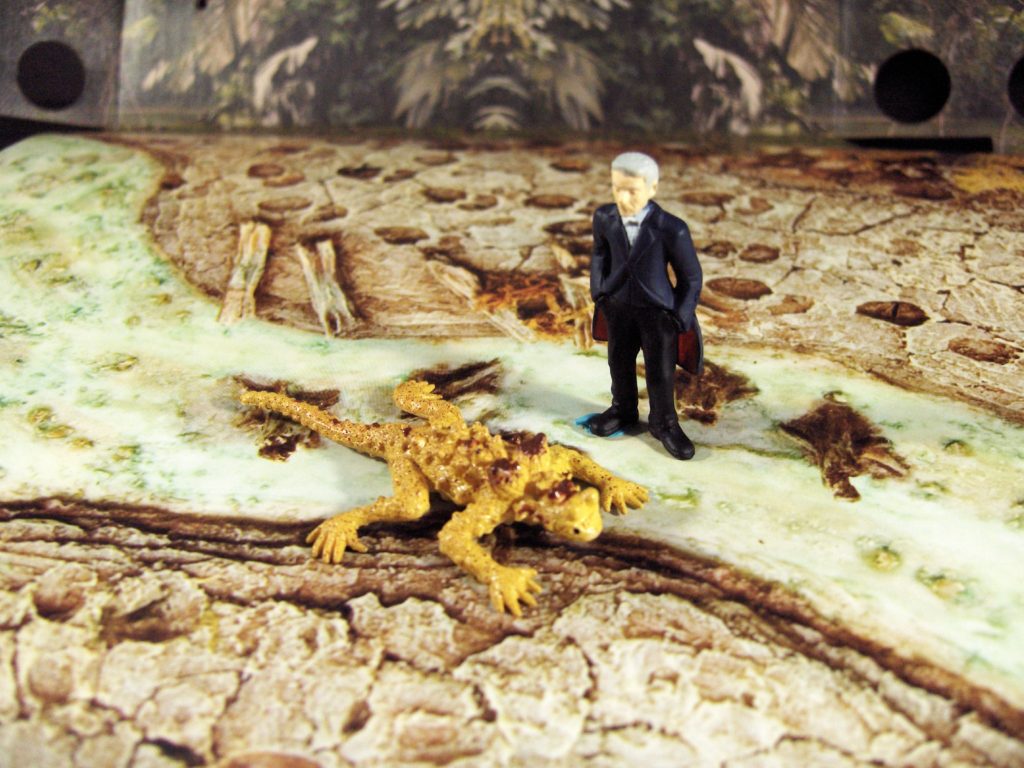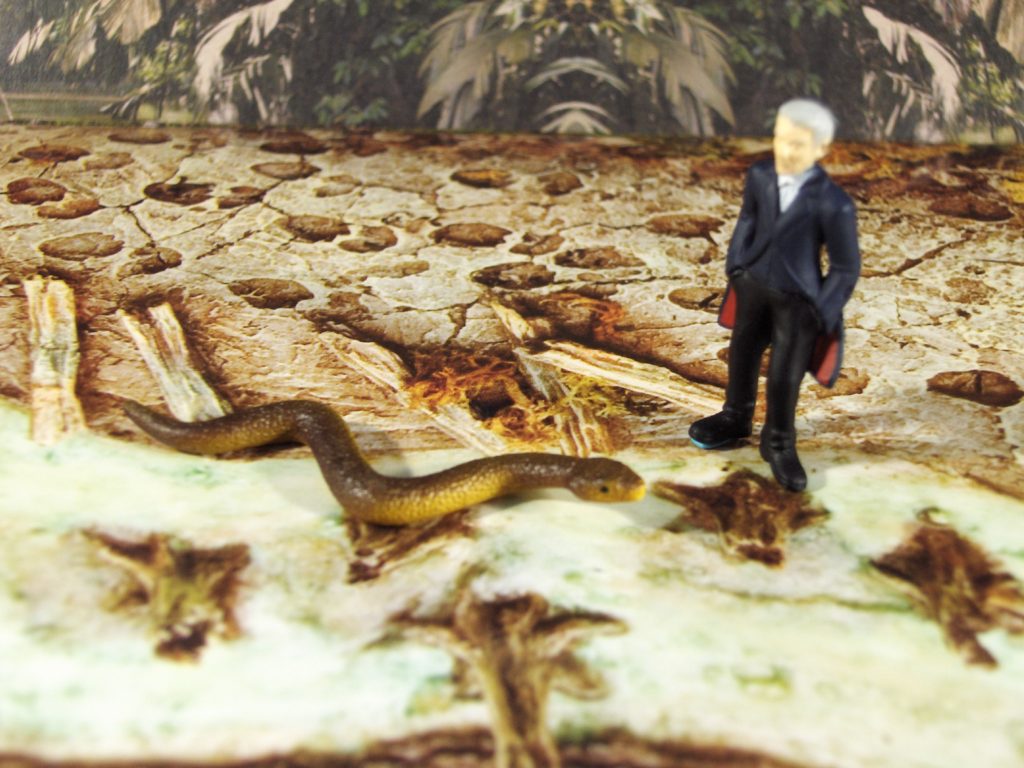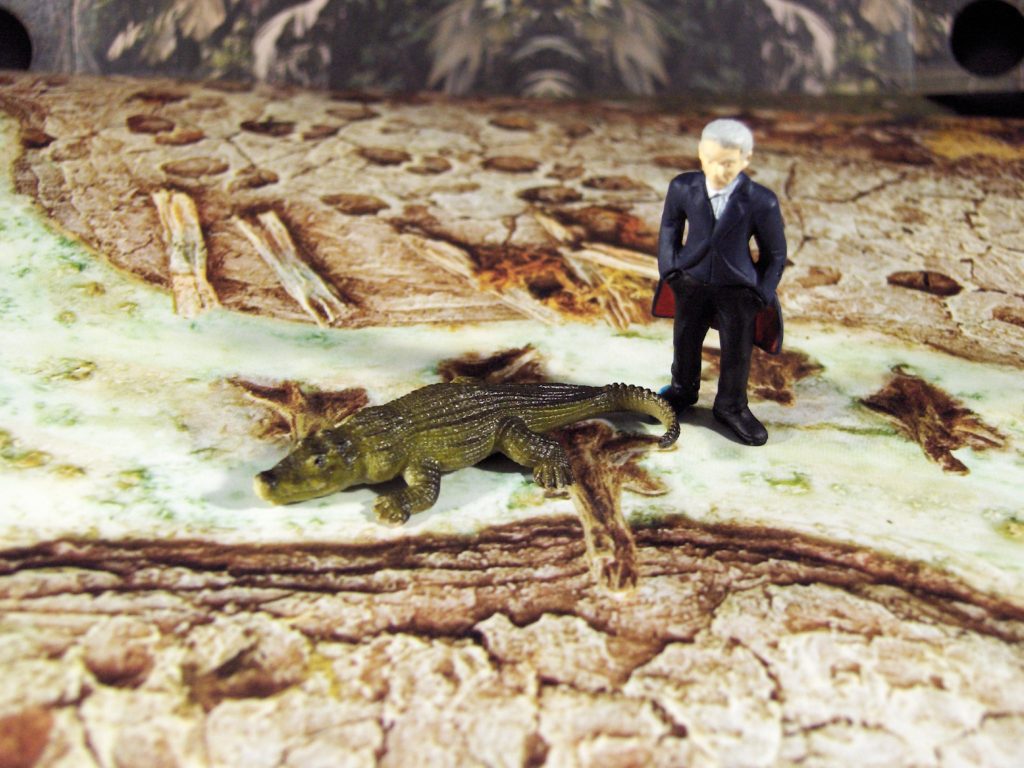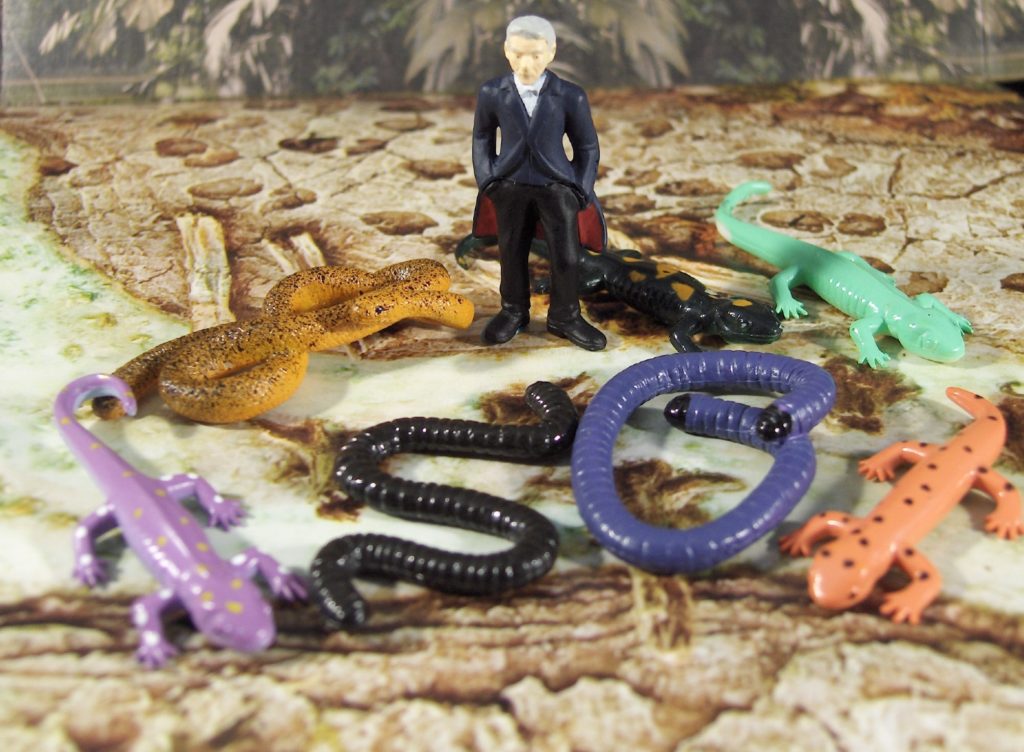I’m back! Again! And this time I decided to approach a unique set, one that I have had for some time. It’s a bucket set produced by COG Ltd called Cool Reptiles–as will be seen in part 2, this name is a major misnomer (this is when the term “herptile” would be so handy)…Today, I am going to look over the reptiles. I’m going to be blunt…they aren’t mind-blowing or anything. But there are some little gems in here, especially in the not reptiles (amphibians…) where there are some truly unique critters. But, again, I have to start somewhere.

This set, and others like them, were released as small plastic buckets. I bought mine in a dollar store, but who knows where else they were sold. The style of bucket is similar to ones that Wild Republic released in the late 2000s/early 2010s (they’ve since changed) but I don’t think they re-released the figures within. The sets were comprised of 16 figures, quite small ones, with varying levels of quality and detail. As mentioned, this set is called Cool Reptiles, but it was misnamed–there are 7 definitive amphibians…and oddly, no turtles of any kind (and, obviously, no tuatara). But let’s look at the reptiles, starting with the hardest to identify to the most easily identifiable (in each group)…
Two lizards. Species indeterminate.

Okay, these two are really the worst of the bunch. Not sure what they are really supposed to be. That makes it hard to give scales, or judge paint jobs or sculpt. But they are good introductions. They are each about 6 – 6.5cm long, and quite flat in design (no lifting off the ground). An interesting thing is the texture–despite the size there is a noticeable roughness to them, almost pebbly, and it is intentional. Other figures in the set have different skin textures, mostly appropriate to the animals being represented.
Monitor Lizard Varanus sp.

Next on the identifiable scale, we have what is probably a monitor lizard, judging by the heavy build and big head. If we had to to give it a species, it’s most likely meant to be a Komodo dragon Varanus komodoensis Ouwens, 1912. If for no other reason than the single colour and hefty proportions. The tail is of course a bit short, but at least this one is sculpted with a little more life, raised off of the ground as though it is actually walking. In spite of the small size, there is a fair amount of detail built into this figure, with folds all along the body and the head. It’s not a great sculpt of course, and the paint isn’t great (and at least on mine, pretty worn), and the skin is otherwise smooth. The figure is 6cm, so if it is a Komodo dragon, it would be 1:50 (if it is a smaller monitor, than the scale would adjust as needed).
Jackson’s Chameleon Trioceros jacksonii (Boulenger, 1896)

So now we’re at a recognizable species–given the eyes and horns, it could only be the horned chameleon or Jackson’s chameleon. And it has some nice features, but first–yeah, another flattened lizard. This probably made the casting process easier for the producers, but it does have an impact on the accuracy. Despite that, it does capture a number of elements–obviously the horns, and the weird eyes of a chameleon. But it also has other clear morphology captured in this even smaller figure; 5cm without the horns, so 1.7~ish. I don’t know if it’s visible, but the toes are in the proper, weird chameleon morphology (a split between 2 forward and 2 backward toes) and there is a continuous ridge of low spikes along the back. Again, the skin is pebbly, but more pronounced than in the first two lizards.
Thorny devil Moloch horridus Gray, 1841

This next one is the most unmistakable lizard figure, and an interesting choice for this kind of set–a Thorny devil! This may be the only lizard species in this set so far covered on this blog! So why, when there are so many, would it be this one? Who knows, but it’s a great choice, and given the limitations of these small figures, they really did try. Again, it’s pretty flat, and a bit sprawled out, but they made up for it in the attempt at the paint job–mostly yellow, but with a few bands and spots of brown–and especially in the skin detailing. The whole body is covered in tubercles, progressing from larger along the back to much finer right to the tip of the tail. Overall, it’s a decent version of this lizard. And at 6 cm, it is about 1:3 scale; small, but probably the easiest Thorny devil figure to match in size with at least some other Australian figures (or at least, it wouldn’t be monstrously huge…). Okay, that’s the lizards. Now the other squamates:
Yellow-bellied Water Snake Nerodia erythrogaster flavigaster ? (CONANT 1949)

Of the 3 snakes, this one is the toughest to identify. Mainly because it is very, very plain. Brown body, yellow belly. Fairly thick body, so not a sea snake. Narrowed neck, small but clearly visible scales…really, it can stand in for pretty much any snake, but visually the Yellow-bellied water snake is the closest. Interestingly, they resisted the temptation to give it the forked tongue as many snake toys have. Otherwise, I really can’t say much about it. Assuming it is a water snake, they reach 122cm; the figure at about 7cm long is 1:17.
Grass snake Natrix natrix (Linnaeus, 1758)

Another tough one to identify. Again, it’s fine. It’s a brown snake. Pretty typical, again. But it does have two distinct features–the red eyes and the white v-shaped collar; so while identifying this one isn’t easy, it’s at least closer. It’s a little thicker-bodied than maybe it should be for a grass snake, and it seems like whoever made this set wasn’t as concerned with paint details on the snakes. But the sculpt does feature far more prominent scales than the last brown snake, so it’s nice to see that they kind of tried. As for scale, the figure is 7cm long again; assuming a 100cm snake, it would be 1:14 scale.
Boomslang Dispholidus typus (A. Smith, 1828)

And to round out the snakes, a green one! Which can be honestly as challenging to put a name to. That said, the slightly pointed (but not very sharp-nosed) snout, black highlight on the back, and bright green body kind of led me to the Boomslang, a highly venomous snake that honestly doesn’t get much attention compared to other venomous snakes–like the geographically-similar green mamba (I did compare, this figure is not that)! Again, they took the time to sculpt in fine details around the face, as well as somewhat capturing the scale pattern of these snakes. Overall, not a terrible attempt (with the leeway that this is COG and not a company that we’d expect more from). Measuring the body of this one was interesting due to the coils, but it measures about 10cm along the spine, giving a scale of 1:16.
American alligator Alligator alligator (Daudin, 1802)

And the final reptile in the set–an American alligator! It has the broad, flat head that would differentiate it from the crocodiles. The figure also has nice touches, like the hefty bulk behind the neck, commonly see in big animals lying on the ground. They have sculpted in the rows of scutes down the back; I could be wrong, but it looks like they actually put 7 rows down the back, just as in an adult alligator. Not sure how close they came around the neck. The tail, though, seems a bit short and thin. The overall colour of green is a little bright, but the dark wash gives it some personality. Overall, not a bad alligator figure. The figure is, like most of the lizards, 6cm long, so the scale would be around 1:77.

So as I conclude part one, what can I say about the reptiles? Overall, not terrible attempts at the lizards, most of which are sort of identifiable; the alligator is okay as well. The snakes are more generic, but might represent something different–if nothing else, they’d be great for fleshing out small dioramas for almost any environment. And if I didn’t say it–anyone that wants to make identification suggestions, it would be welcome, since some of them present a lot of challenges (I’ll edit as needed). But in part two (coming whenever), I will be discussing the real treasures of the set…the amphibians. If the photo above didn’t tip you off…no frogs (weird, right? It’s like the lack of turtles) but THREE caecilians? Next time though…!
Disclaimer: links to Ebay and Amazon on the AnimalToyBlog are affiliate links, so we make a small commission if you use them. Thanks for supporting us!



